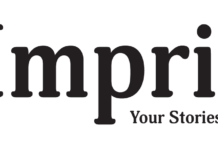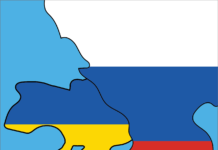The Institute for Quantum Computing (IQC) at UW was able to split a photon into three parts, a world first.
The last breakthrough in splitting photons came thirty years ago and changed scientists’ understanding of quantum entanglement.
With the data collected from this first experiment, the researchers at IQC can determine the next steps for their research.
Chris Wilson, an investigator at IQC and a professor of Electrical and Computer Engineering and, Physics and Astronomy, described the background of splitting a photon into three parts.
“The idea is that a lot of, if you’ve read in the news about quantum entanglement [and also] quantum teleportation, this is based on experiments really done by splitting a photon into two parts” Wilson said.
“In the 70s or 80s, people figured out how to split a photon into two entangled photons and thats been really a work-horse of all quantum research.”
Wilson explained the difficulty of splitting it into just two parts.
“After people had done that, immediately they thought that if we can split them in two can we also split them in three?” Wilson said.
“[They] thought that maybe they could but, for technical reasons it has just been extremely difficult. People have been trying since the 80s but they haven’t been able to do it, so that was part of the significance since we were the first people to be able to do it.”
A photon is an elementary particle and is the quantum of the electromagnetic field, which means that it is important for electromagnetic radiations like x-rays and ultraviolet light. To split the photon, researchers at IQC used a common method called spontaneous parametric down-conversion or SPDC.
“[SPDC] is one of the ways that people have figured out how to do it,” Wilson said.
“The parametric language is some kind of old fashioned thing, but it really means in some senses a process … that can combine two photons to make one or can take one and split it in parts.”
When the photon is split, it creates a non-Gaussian state of light, which is important for gaining quantum advantage; relevant element in order to do other kinds of computation and not the classical ones.
“[Gaussian states of light] are all the states of light we encounter in everyday life, Wilson said.
“When I have the light coming out of the lamp or radio waves that are made by an antenna, or what comes out of the laser. Those are Gaussian states of light. Gaussian means normal or typical things and here we are doing things that are very atypical or very unusual.”
He explained that, for quantum research, creating non-Gaussian states of light is essential, without which quantum computing may only be simulated.
“It is hard to create light that isn’t Gaussian and the importance of that for somebody’s application is that if you want to do quantum computation using photons, you need non-Gaussian light,” Wilson said.
“If I only have these typical states of light I can do some kind of computing but its all classical computing, there is no quantum advantage. So, to get quantum advantage I need non-Gaussian light.”
Wilson said that the principal objective is to solve a problem that has not been accomplished for a long while, and then just understanding whether it works or not.
This project is mainly related to fundamental physics and sciences, trying to do quantum computation using microwaves, photons and all the elements mentioned.
He concluded that their next steps are to confirm that the photons are truly entangled, and then look for doing new applications with all the information collected.































